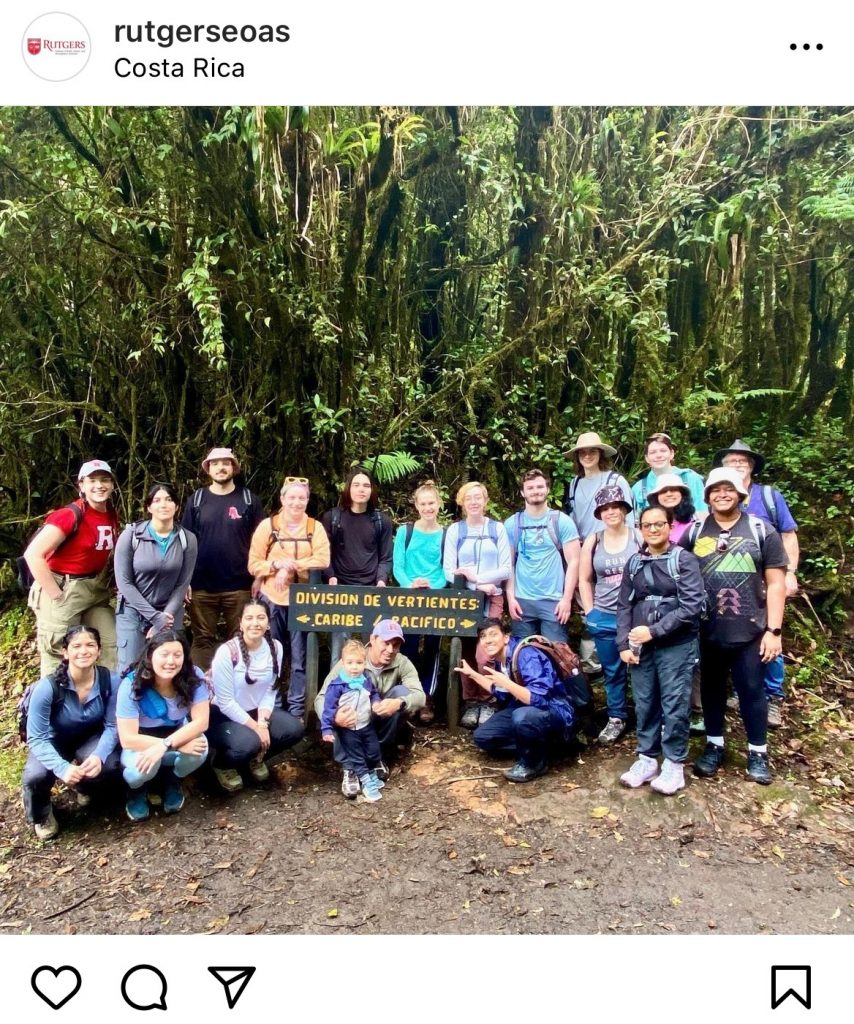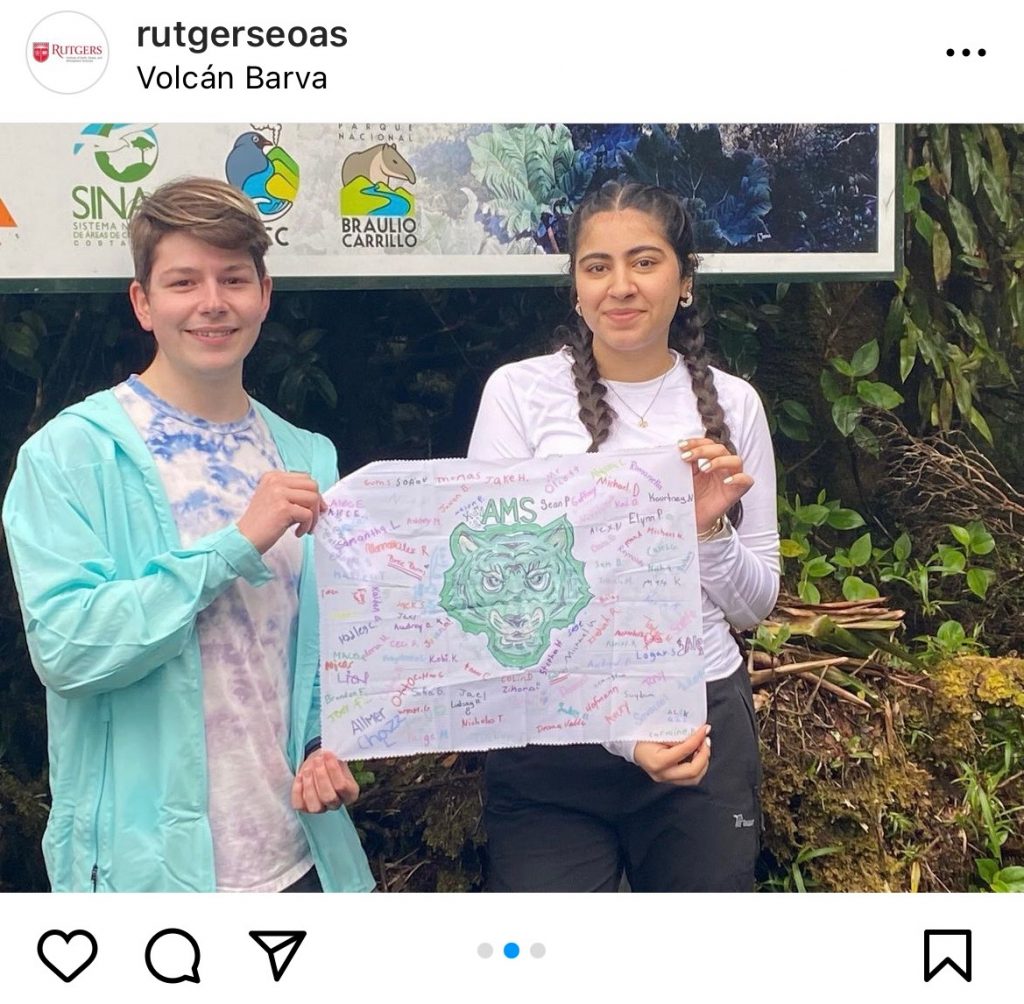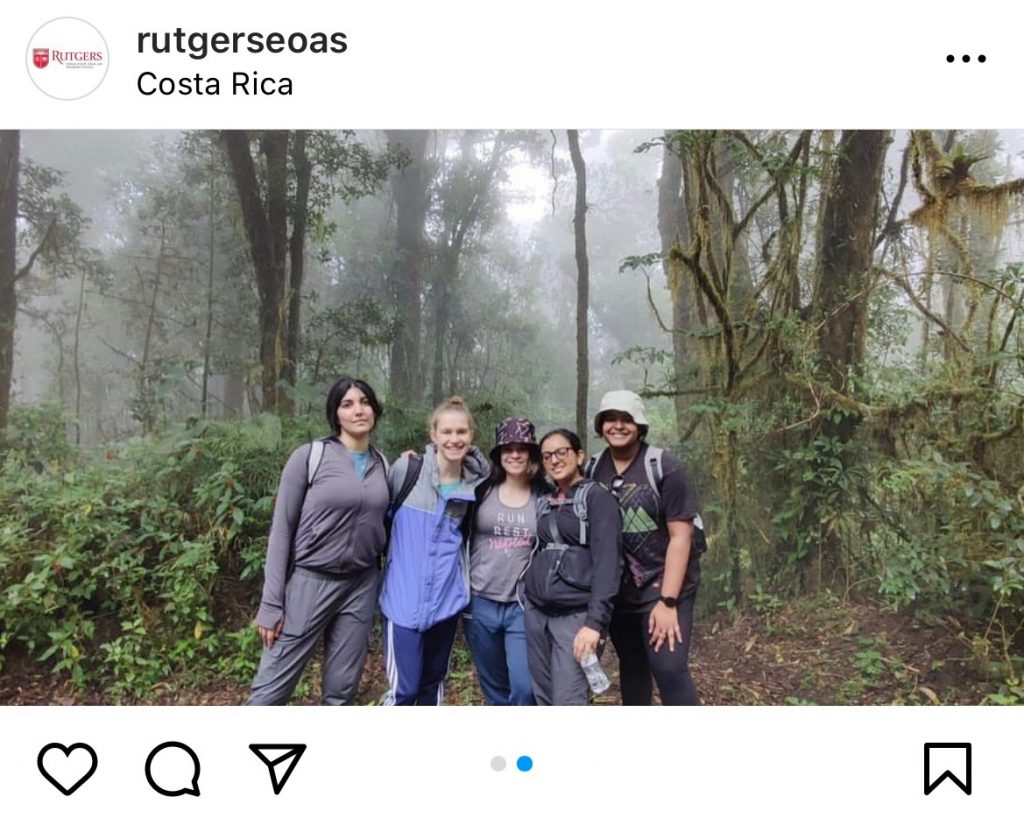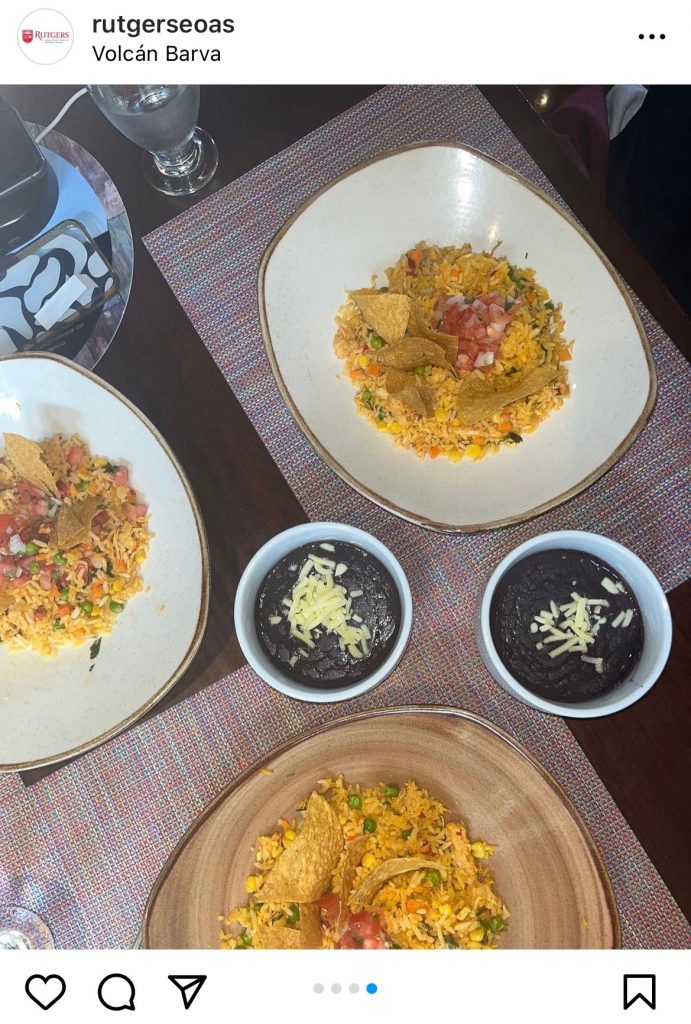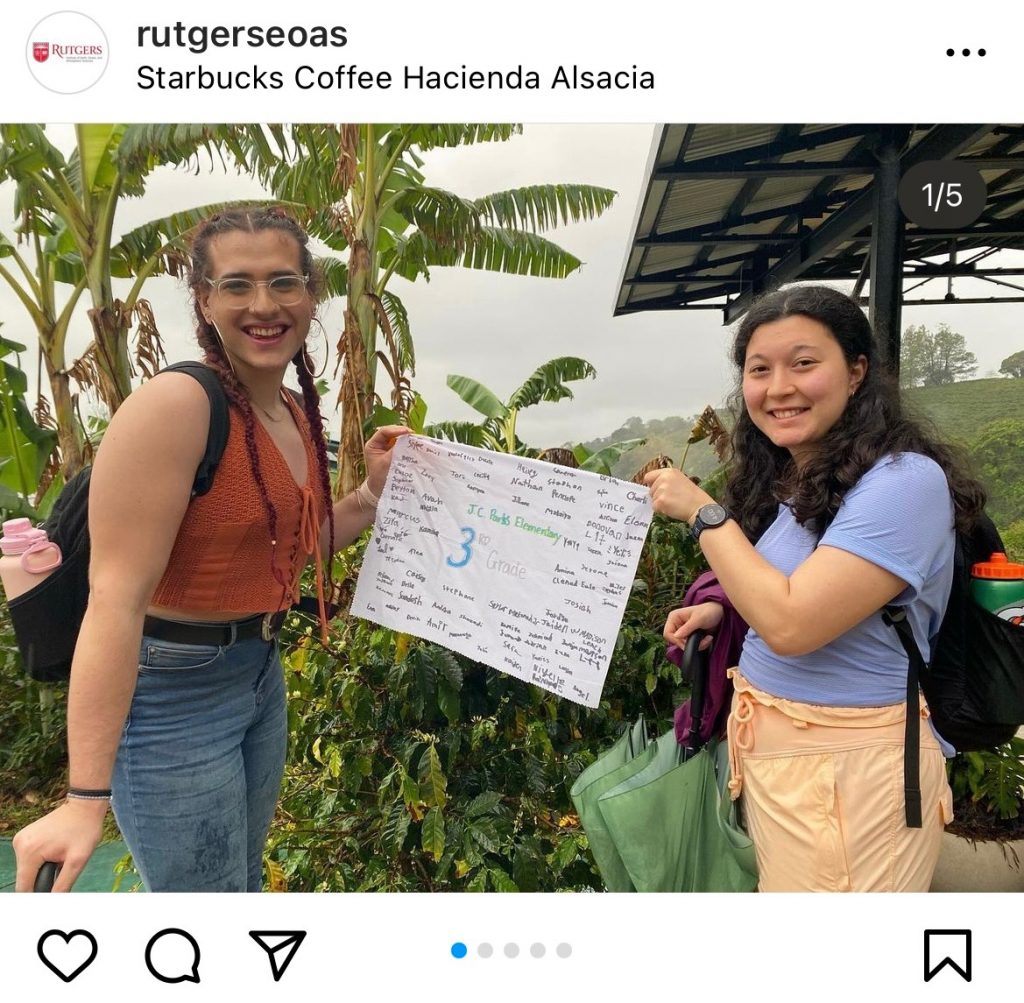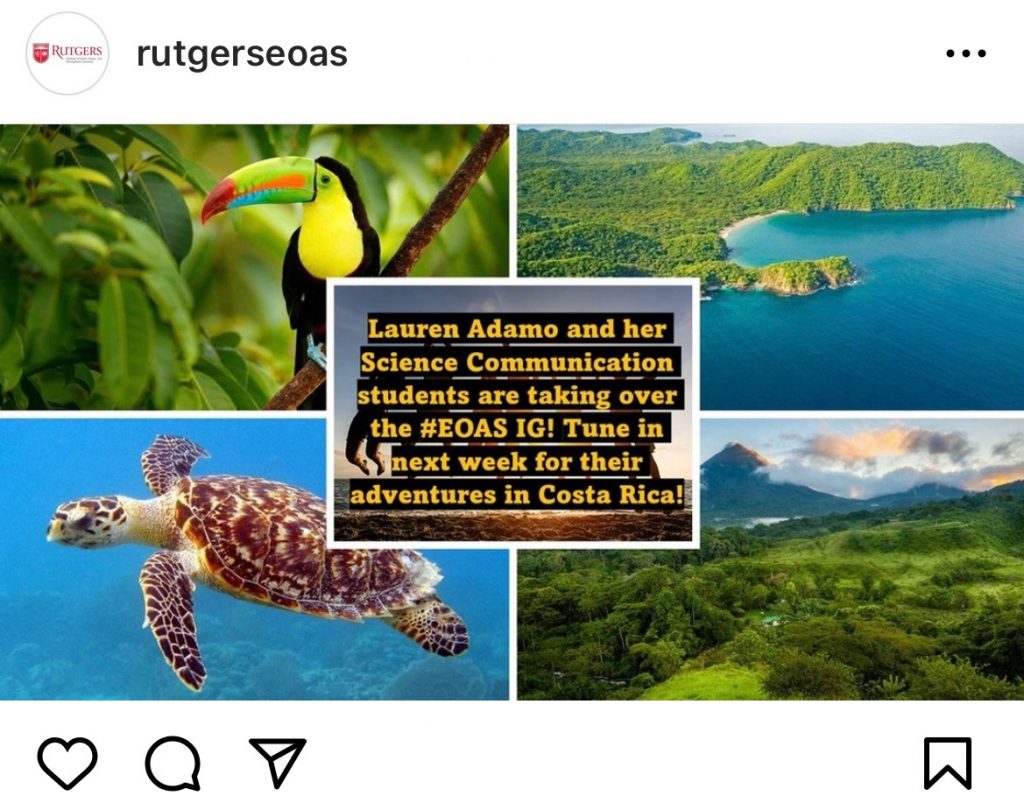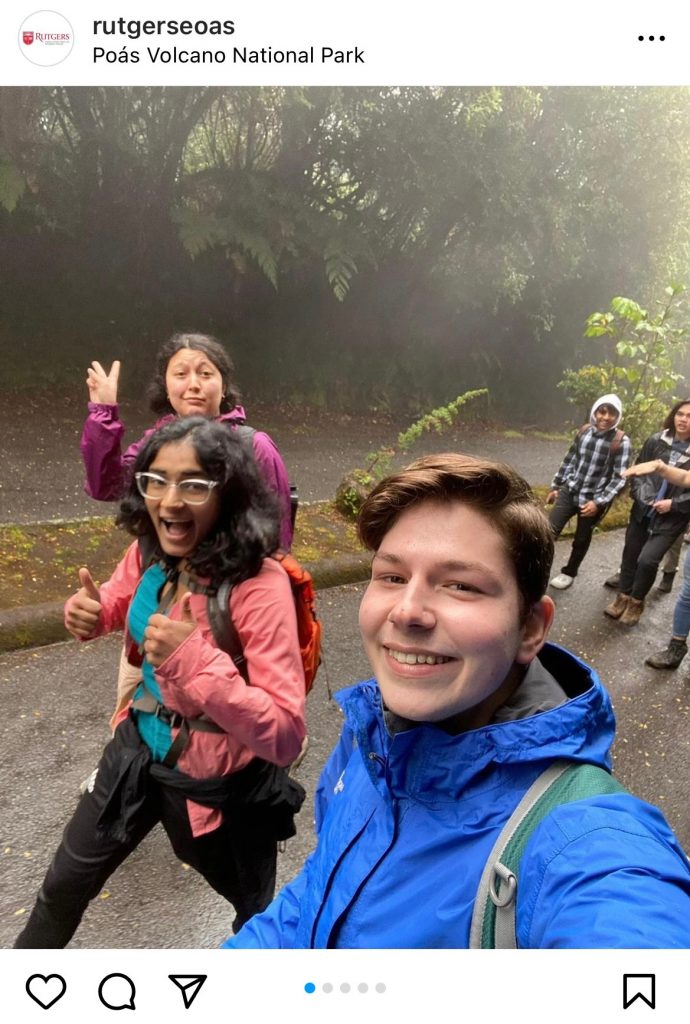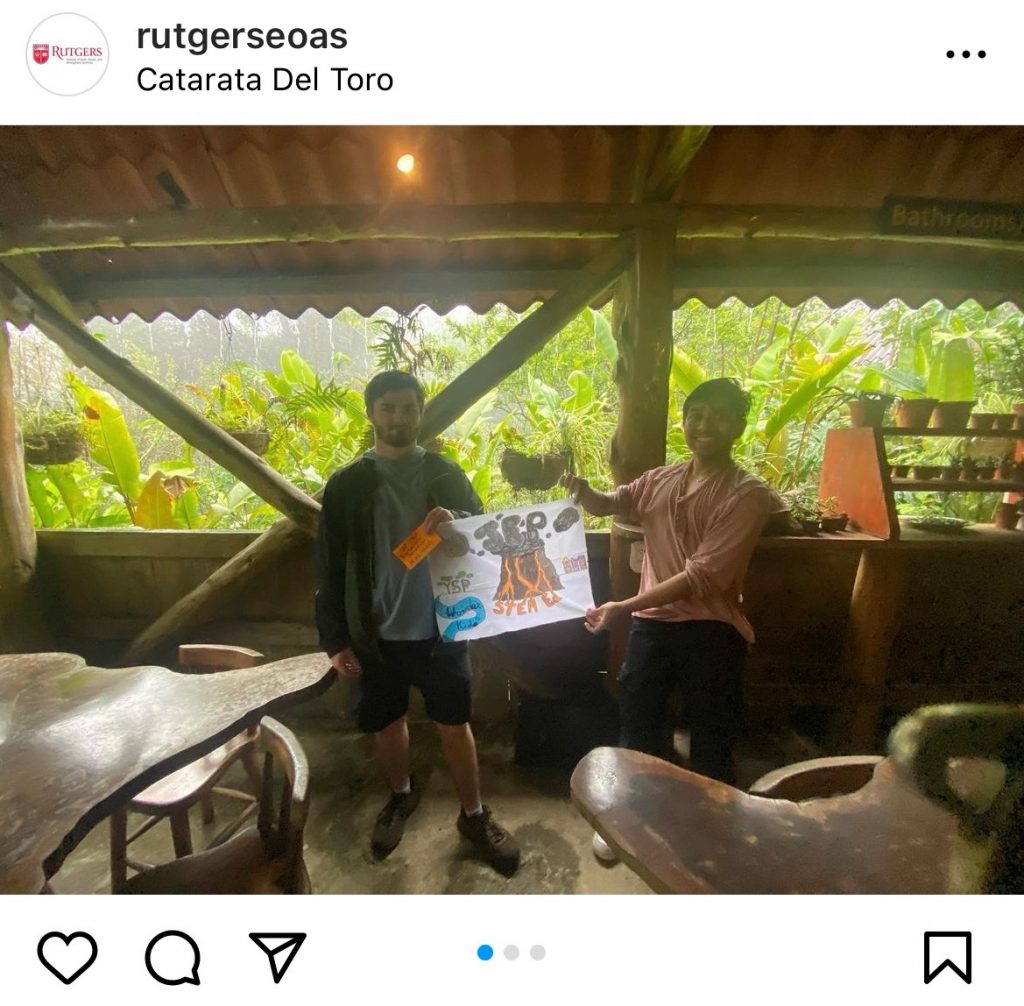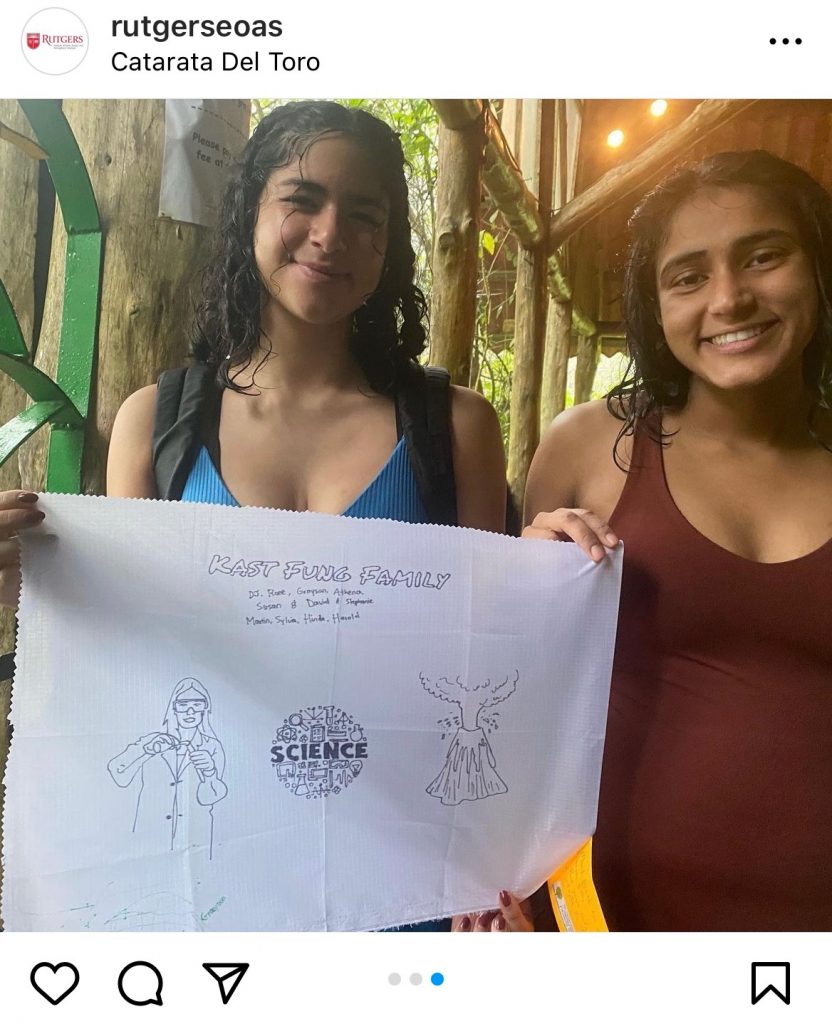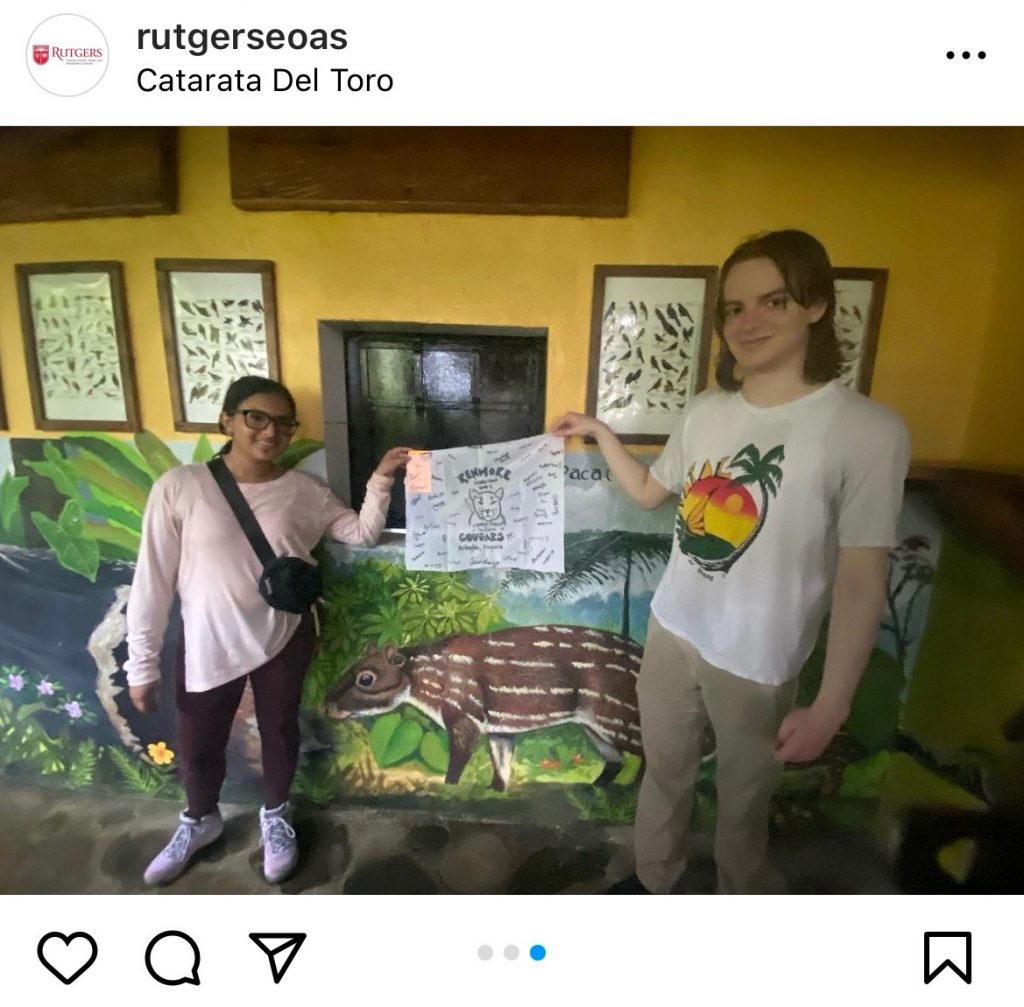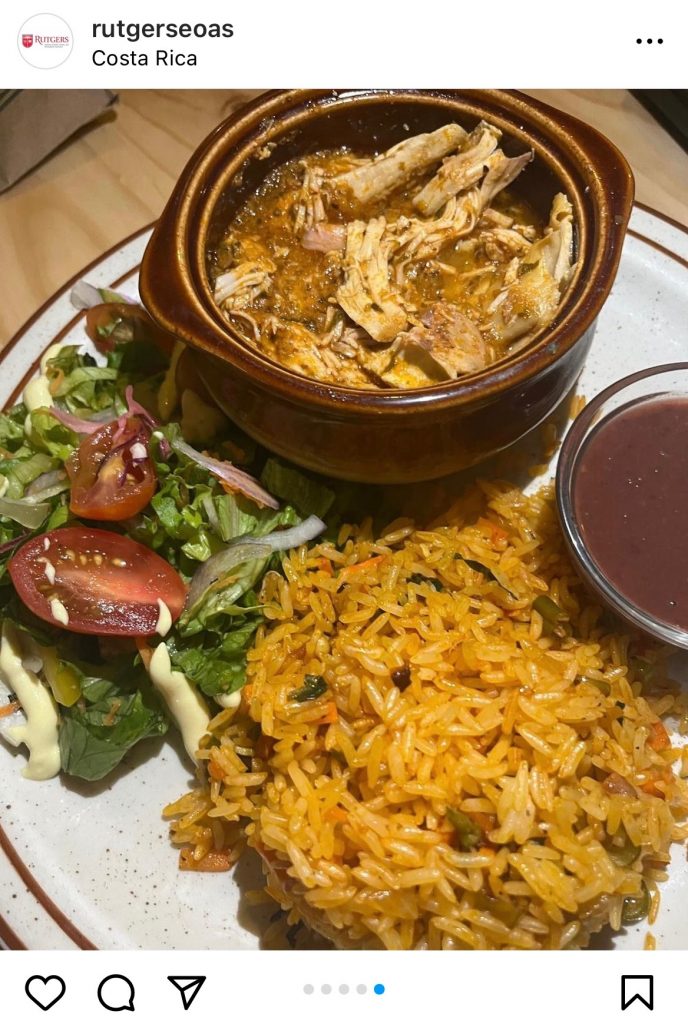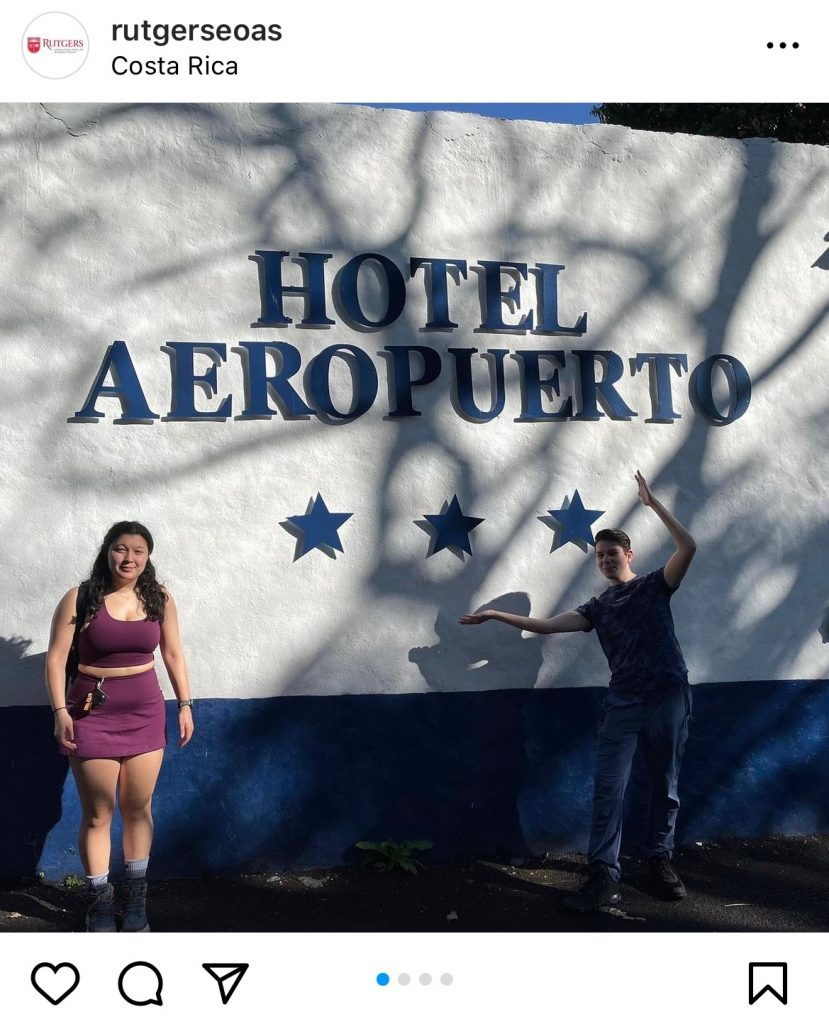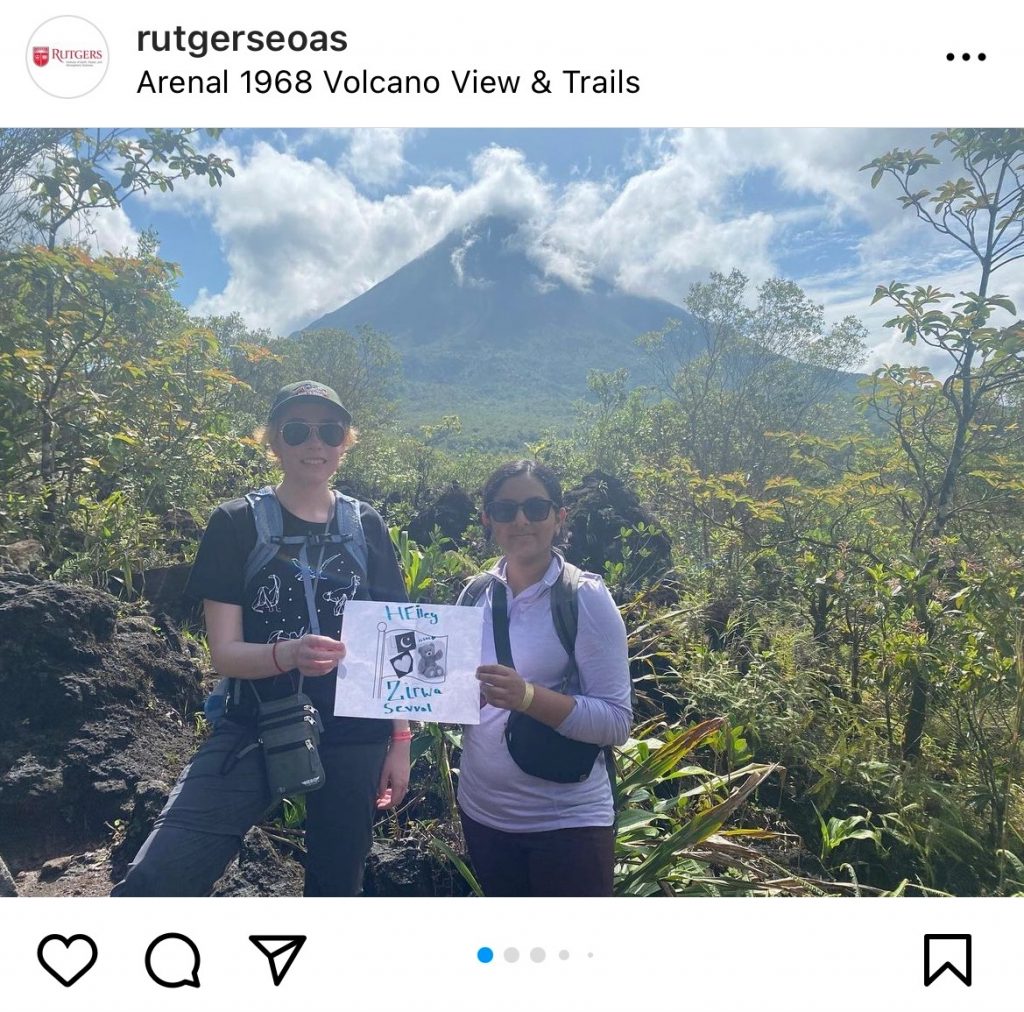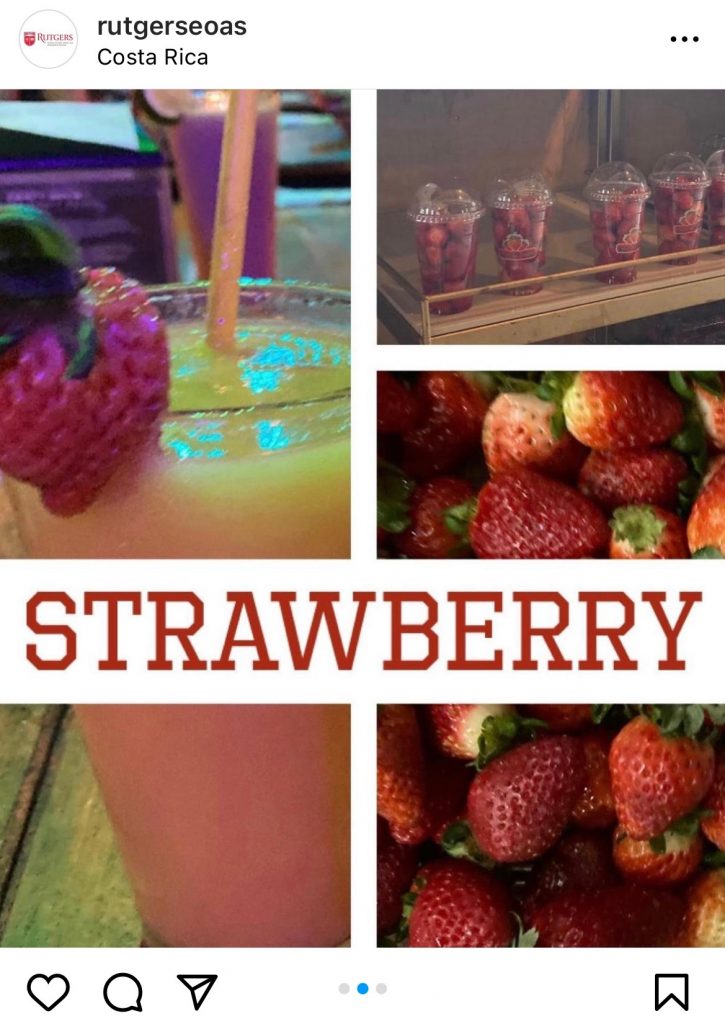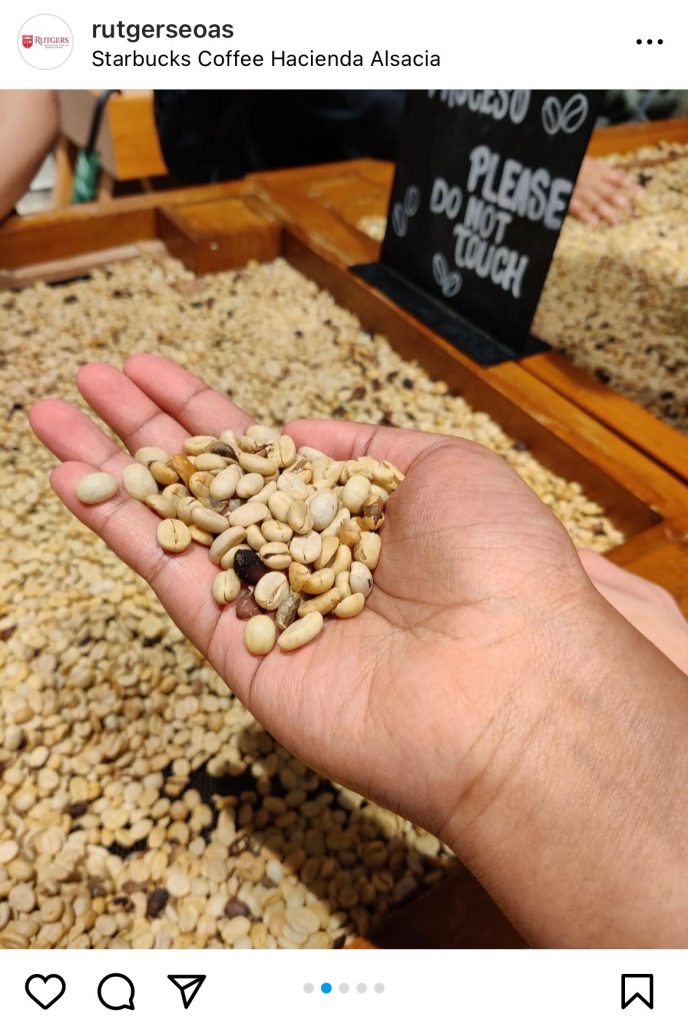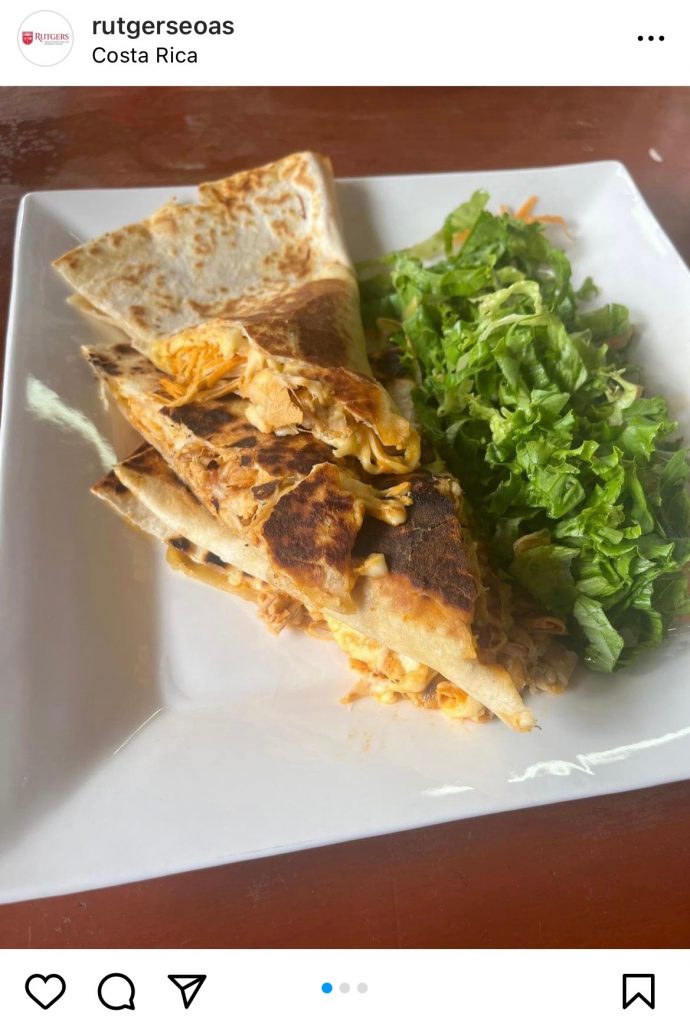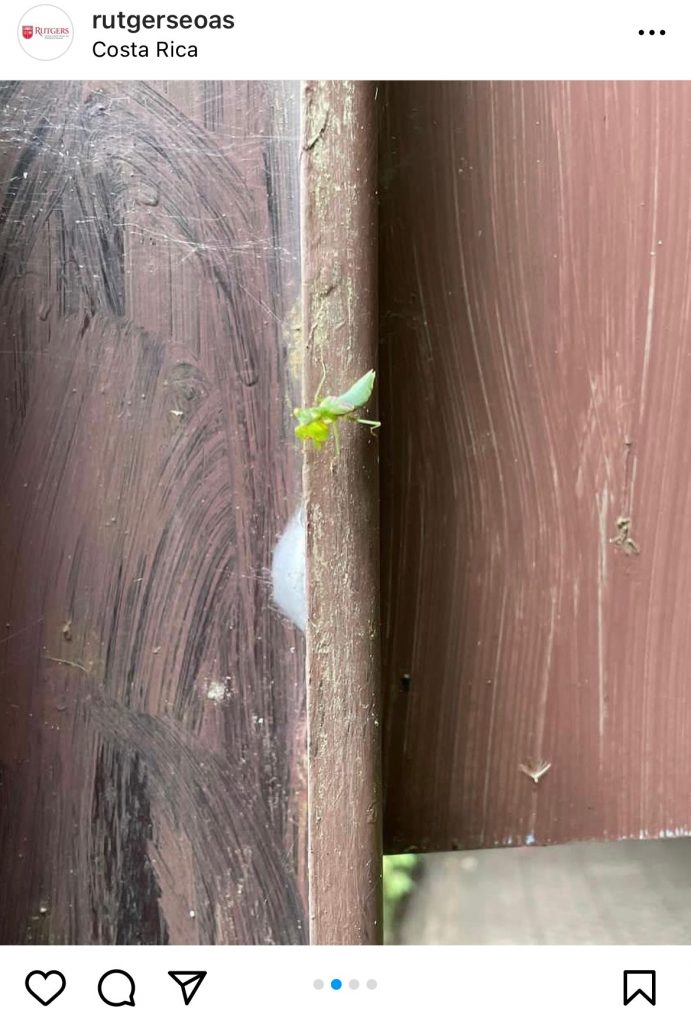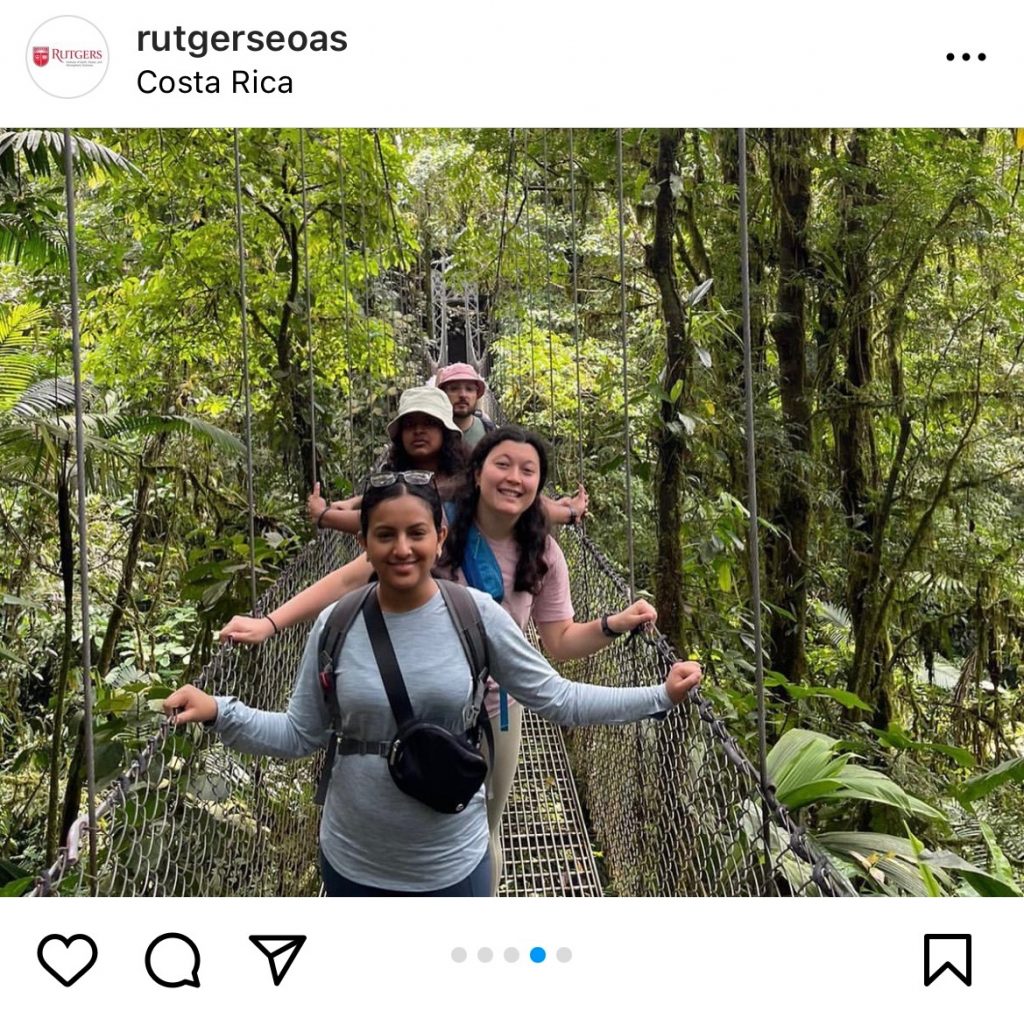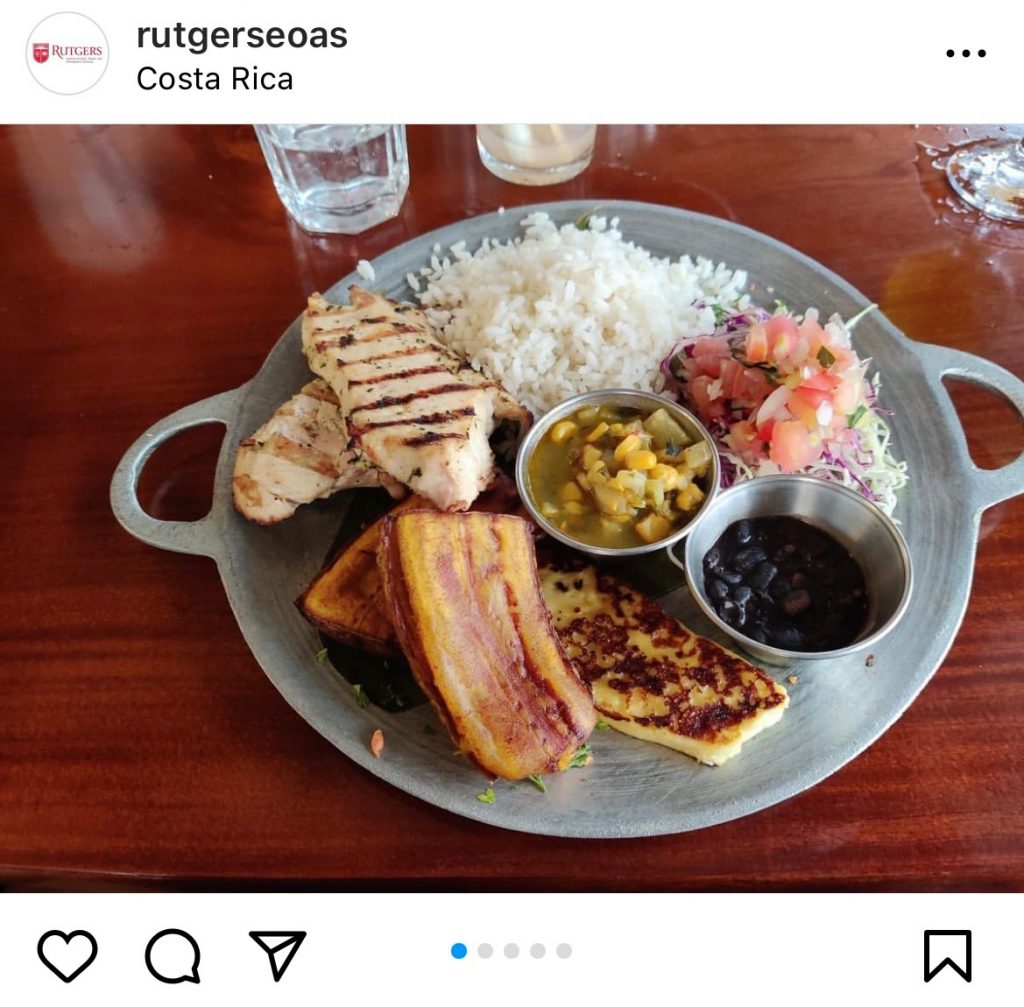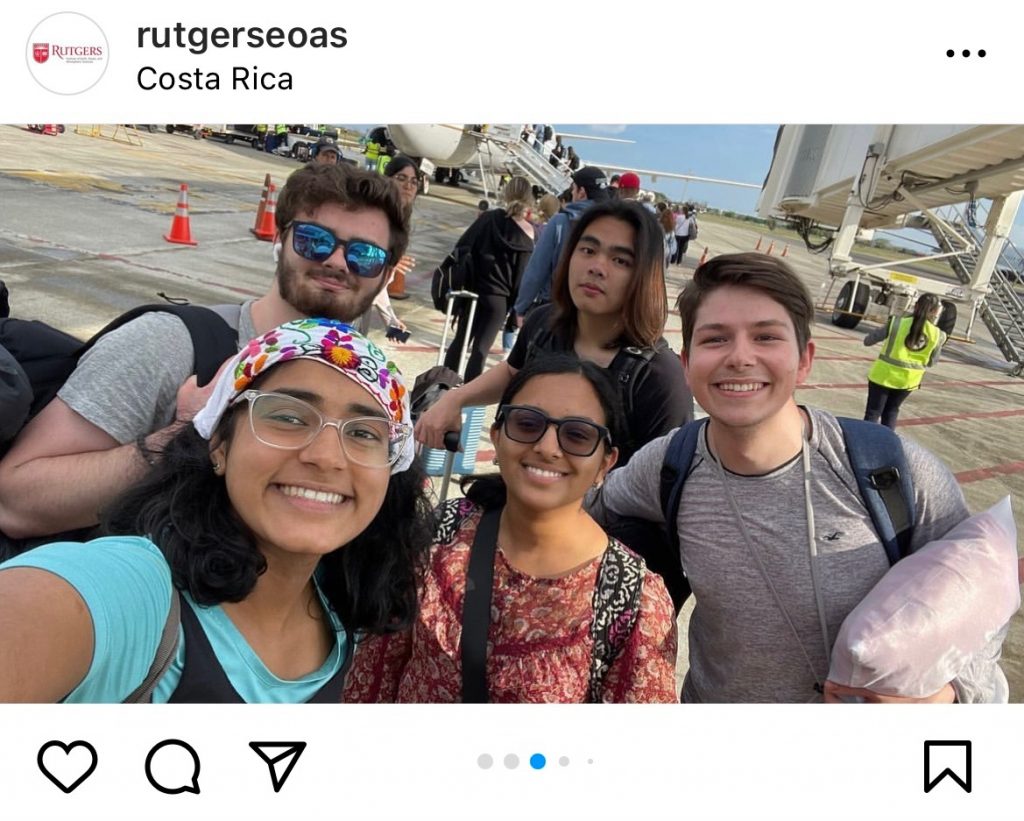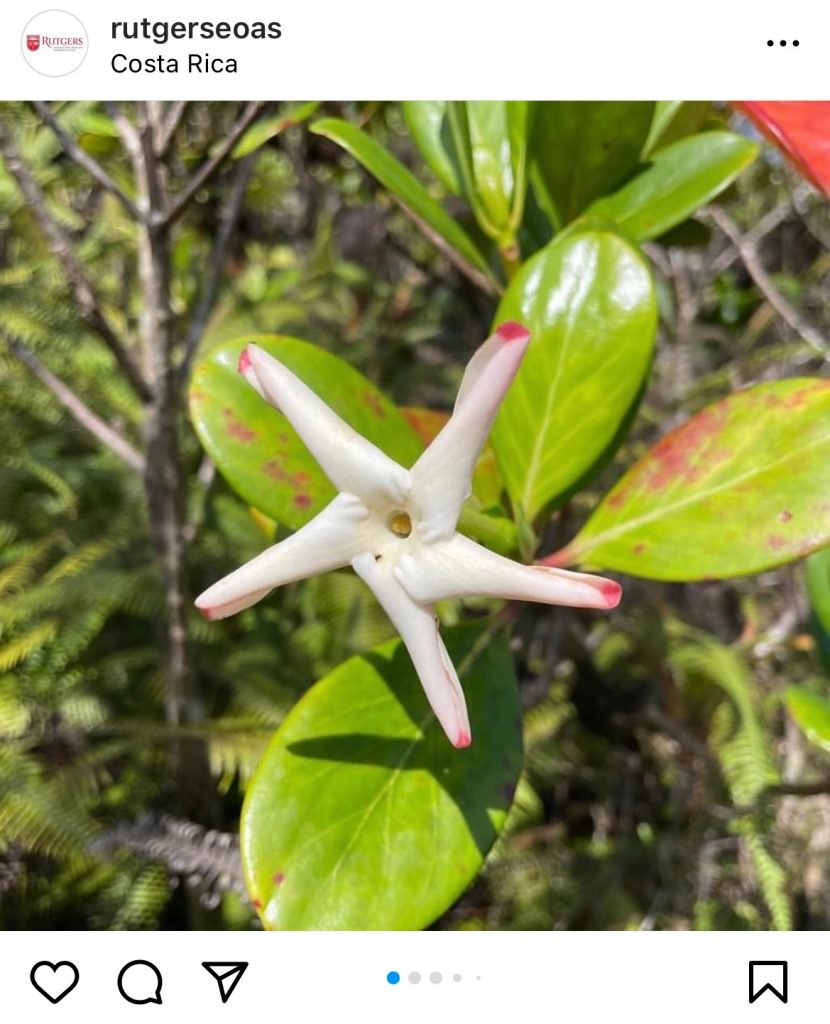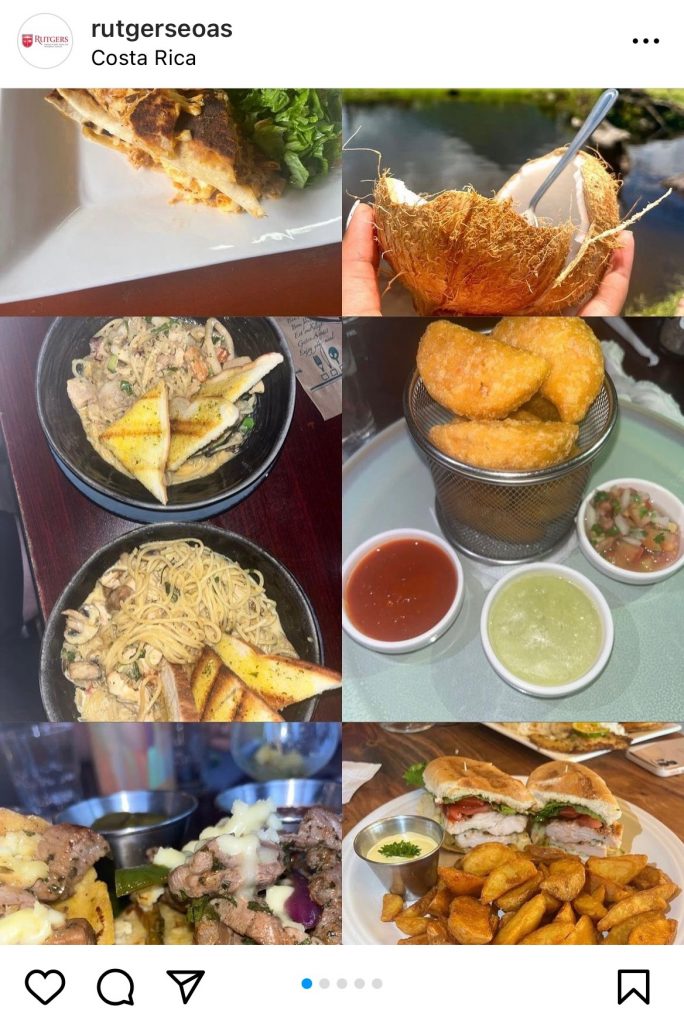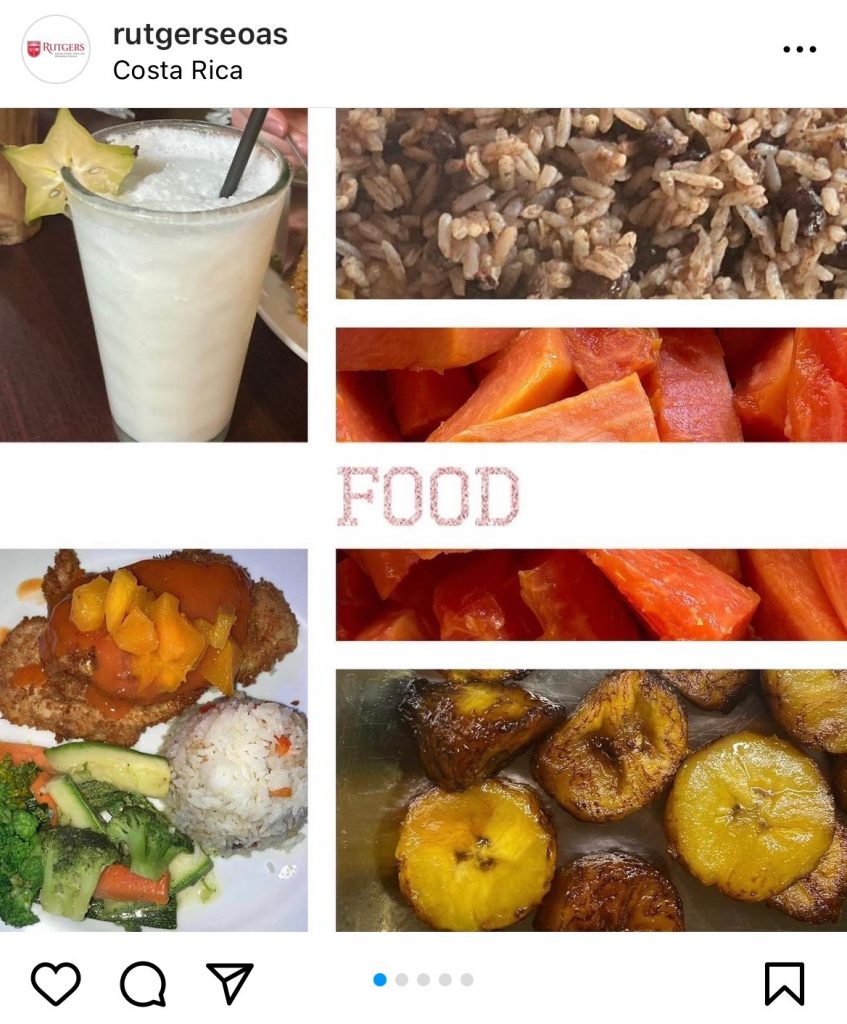Social Media
Follow our journey LIVE on our Instagram page below!
Click any preview to view the entire instagram post, or navigate the Rutgers EOAS instagram page here:
@rutgerseoas Greetings everyone! Meet our “Talk Science to Me” class who is spending the @rutgersu Spring Break in Costa Rica exploring volcanoes and practicing science communication! Stay tuned for posts all week from groups of students sharing their unique learning experiences. @rutgersnb @rutgerssebs @rutgers.global @rusashp @rugeomuseum @rutgerssasmps @rutgers_aresty #sciencecommunication #rutgers #rutgersuniversity #rutgershonorscollege
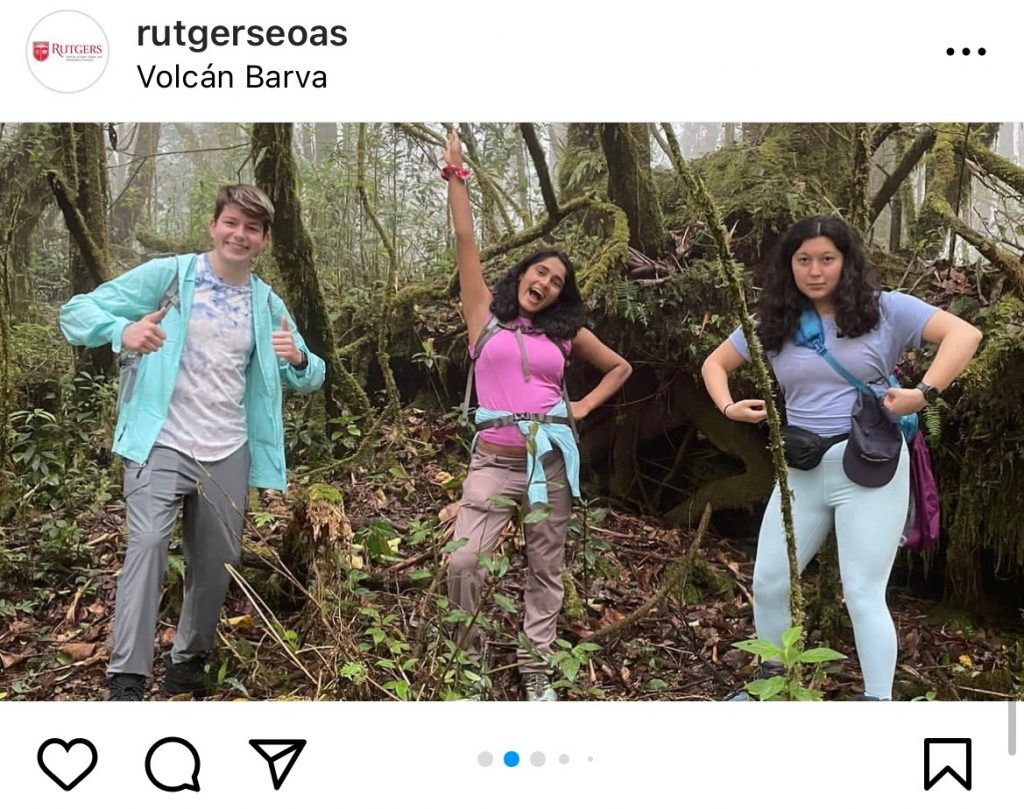 @rutgerseoas Hi this is Anya, Zoe, and Philip and we will be discussing Ecotourism.
@rutgerseoas Hi this is Anya, Zoe, and Philip and we will be discussing Ecotourism.
Ecotourism refers to the travel to natural areas with a focus on environmental conservation and education. This can help fund conservation and directly benefit local communities.
Today’s example of Ecotourism is the Barva Volcano national park. This national park demonstrates the potential for integrating knowledge about the landscape, while being immersed in its beauty and enjoying a fun activity — hiking. @rutgersu @rutgerssebs @rutgers.global @rutgersnb @rusashp @rutgerssasmps #rutgers #rutgersuniversity
@rutgerseoas Greetings from Costa Rica! Our names Adina, Adrija, Shreya, Analiese, and Akanksha and we are going to be looking how local agriculture influences the cuisine here. We’re excited to start exploring the country and will be updating regularly on our findings. @rutgersnb @rutgersu @rutgers.global @rusashp #rutgers #rutgersuniversity #sciencecommunication
@rutgerseoas Buenos Días from Costa Rica! Our names are Navya, Chris, and Yanelli and we will be sharing our meals this week, as well as discussing the cultural origins of these foods. Today we have clips of our meals the first day we were here. @rutgers.global @rutgersnb @rutgersu @rusashp @rutgerssebs #sciencecommunication #rutgers #rutgersuniversity
@rutgerseoas Students showing off flags made by the 3rd, 4th, and 5th grade science classes of JC Parks Elementary School in Maryland. Thanks Mrs. Leedy for working with your students to create these fun flags. Pictures were taken at the Starbucks coffee farm where we learned about how coffee is grown and made in Costa Rica. @rutgersnb @rutgersu @rutgerssebs @rutgers.global @rusashp @rutgerssasmps
@rutgerseoas As you may have noticed, Dr. Lauren Adamo @laurenrockdoc and her Science Communication students from SAS and SEBS have taken over our Instagram for the week as they travel through Costa Rica! This research is being led by #Rutgers Study Abroad @rutgers.global, @rutgersartsandsciences, the Dept. of Earth & Planetary Sciences, and @ruhonorscollnb.
Learn more about this course and read through the students’ travel log at: sites.rutgers.edu/talk-science-to-me/
#RutgersResearch @rutgersu @rutgerssebs #instagramtakeover #CostaRica #studyabroad #studyabroadlife #EOAS #sciencecommunication
@rutgerseoas Heyy guys, Yiraldo, Matt, Donald, and Ishaan here and today we were lucky enough to start our day off with visiting the active volcano of Poàs. An interesting fact is that for several hundred meters to the West, there is barely any plant life. This is because of the acidic fumes created by the lagoon, which the wind carries West. Conversely, at the nearby Botos lagoon to the East, plant life is thriving all around the crater.
After Poàs we went down the volcano and took a trip to visit Hacienda Alsacia which is the only Coffee Farm Starbucks owns and more particularly conducts research on the best way to cultivate and process coffee. Starting the tour off, our tour guide, Mauro, explained to us that while this is the only farm Starbucks owns, all the coffee harvested is either sold at the Coffee shop on the land or taken and utilized to conduct research on and see what are the best ways to speed up the growth of the coffee seeds and what are more efficient ways to harvest and process the coffee itself. The photos shown outline the growth process from a coffee seed to a fully matured coffee plant. Mauro explained that the farm actually plants two coffee seeds together in order to minimize space usage while also increasing coffee production. This is beneficial as a coffee plant takes 5 years to begin to produce coffee and only last for 25 years. But research within the farm through cross pollination has made it that the coffee plant becomes matured enough to produce coffee only after 2 years. Ending the tour with a fresh cup of coffee, we definitely developed a new outlook towards this dark and delicious drink. @rutgersu @rutgersnb @rutgers.global @rusashp @rutgerssasmps #rutgers #rutgersuniversity #sciencecommunication
@rutgerseoas The food in Costa Rica results from an evolution of the various European foods from European countries that settled here at various points in history. The pineapple juice featured in this post was made from fresh pineapple grown in Costa Rica. The tropical climate of Costa Rica lends to optimal conditions for the growth of pineapple from pants. The desserts featured include cajetas, tostas, and chocolate covered cocoa seeds. Cacao is one of Costa Rica’s oldest and most locally significant harvests. @rutgersu @rutgers.global @rusashp @ruhonorscollnb @rutgerssasmps @rutgerssebs #rutgers #rutgersuniversity #sciencecommunication
@rutgerseoas Adventures of Ecotourism -Hotel Edition:
Hotels can be examples of ecotourism just like national parks!
Here are some ways the hotels we stayed at encouraged connecting to and learning about nature.
We saw many signs naming the plants that we saw in Hotel Aeropuerto.
Our other hotel La Choza Inn had plenty of advertisements for recreational activities incorporating the natural environment of La Fortuna. @rutgers.global @rutgerssebs @rutgersu @rusashp @rutgerssasmps #rutgers #rutgersuniversity #sciencecommunication
@rutgerseoas These are the tropical fruits and fruit products we encountered during our stay here in Costa Rica. Due to the country’s proximity to the equator, it is able to keep the recommended humidity for growing these fruits of 85-95% for the majority of the year. It also has about 12 hours of sunlight a day year round and keeps the ideal temperature for this produce of 65 to 75 degrees Fahrenheit, making it easy for these plants to flourish. @rutgersu @rutgerssasmps @rusashp @rutgersnb @rutgerssebs @rutgersnb #sciencecommunication #rutgers #rutgersuniversity
@rutgerseoas Hi everyone! Adrija, Adina, Annaliese, Shreya, and Akanksha here with a short post about agriculture in Costa Rica. We visited the Hacienda Alsacia Starbucks coffee farm in Costa Rica yesterday. Arabica coffee is grown in this farm and around the area because of favorable soil conditions such as high altitude, and stable temperatures throughout the year. The quality of the coffee is based on the ripeness of the coffee fruit. The first video shows high grade coffee beans that are dried. The high grade coffee beans (ripened beans) are used within the Starbucks and lower grade beans (unripe beans) seen in the second video are sold to local farmers or cafes. @rutgersu @rutgersnb @rutgerssasmps @rutgerssebs @rusashp @rutgers.global #rutgers #rutgersuniversity #sciencecommunication
@rutgerseoas Invented by the Aztec people in parts of central and northern Mexico, quesadillas have become a staple breakfast and lunch dish across Spanish speaking countries. Traditionally consisting of corn tortillas, cheese, beans, and vegetables, many variations now exist with ingredients such as flour tortillas, chicken, and sour cream.
Copas, or shaved ice, is a popular traditional desert in Costa Rica that incorporates condensed milk, powdered sweetened milk, and your choice of flavored syrup, most traditionally being grenadine. Often served by street venders, copas are a refreshing sweet enjoyed by Costa Ricans and others across the world.
Salchipapa is a Costa Rican favorite street and fast food across Central and most of South America. It started in Peru but expanded to other places. @rutgersu @rutgersnb @rutgerssebs @rutgerssasmps @rusashp #rutgers #rutgersuniversity #sciencecommunication
@rutgerseoas Hey guys, Matt, Donald, Ishaan, and Yiraldo and we’re back to discuss the many colors of the Costa Rican wildlife. In Costa Rica the disparity between different animal colors is very prominent. Some species have very vibrant colors that indicate their poisonous nature. For example, the Poison Dart frog pictured above is a clear example of a species of animal that should be avoided due to its poisonous nature. Conversely, other animals have evolved to match their native environments. Pit vipers, praying mantises, and lizards such as the ones pictured above are great examples of the local fauna’s ability to camouflage in plain sight. Overall, Costa Rica is a beautifully colorful country and the local fauna reflects that. @rutgersnb @rutgerssebs @rutgersu @rutgerssasmps @rusashp @ruhonorscollnb #rutgers #rutgersuniversity #sciencecommunication
@rutgerseoas Adventures of Ecotourism: Canopies, Ecosystems, & more.
Arenal offered many opportunities to interact with Costa Rica’s ecosystems.
We explored the canopy and got to see hotels for pollinators built into the environment. This shares the value of pollination with travelers in a fun way.
The canopy tour also included signage detailing the different ecosystems interactions, such as wasps pollinating figs.
This canopy tour was amazing and offered different ways to explore what is easily overlooked on a rushed tour. Instead we got to slow down and drop into the beautiful Costa Rican rainforest. @rutgersu @rutgerssebs @rutgersnb @rusashp @ruhonorscollnb @sebshonors #rutgers #rutgersuniversity
@rutgerseoas Hey guys it’s Ishaan, Matt, Donald, and Yiraldo here once again! Today we were on another hike in Rincón National Park. In contrast to the biomes ventured in previous days, like the rainforest, today we entered savannah-like lands. In these dry and arid lands, a different and unique form of life thrives. For flora, we observed massive aloe vera congregations, exquisite cacti, long layers of grass covering the open land, and bizarre plants- like the Buttercup Tree(Cochlospermum vitifolium). For fauna, we observed dung beetles in the subfamily Scarabaeinae and spiny-tailed Iguanas in Genus Ctenosaura. Along the way we also discovered various “mud pots”, which affect the acidity of the soil; this is the reason that the trees here don’t grow as tall in comparison to other places. We highly recommend visiting this place at least once! It’s truly an eye-opening and fulfilling experience! @rusashp @rutgersnb @rutgerssebs @rutgersu @ruhonorscollnb @rutgerssasmps #rutgers #rutgersuniversity #sciencecommunication
@rutgerseoas In Costa Rica, you can find rice and beans in every meal: breakfast, lunch, and dinner. Both McDonald’s and Subway have rice and bean options at some of their locations. This staple food is an economical and reliable source of nutrients. Costa Rica is the third largest producer of rice in Central America. Due to the amount of rain this country gets, around 65% of the country’s rice is able to be rainfed. When rain is not as viable for feeding the plants, which is primarily in the north of Costa Rica, irrigation is used. Long-grain rice is the only rice grown in Costa Rica and it has a distinctly different flavor than that in the United States- we would definitely recommend trying the rice and beans in Costa Rica. @rutgersu @rutgersnb @rutgerssasmps @rusashp @rutgerssebs #rutgers #rutgersuniversity #sciencecommunication
@rutgerseoas Adventures of Ecotourism: Reflection
Here’s some of pros and cons we’ve noticed about Ecotourism.
Pros
– Provides income for the country while prioritizing ecological conservations efforts
– Educates and immerses people in nature, providing an introduction to ecosystems for everyone
Cons
– through commercialization efforts and tourist activities there can be a negative impact on the environment
Thank you for joining us on our journey, we were grateful to engage ourselves in the intersection between tourism and wildlife! @rutgerssebs @rusashp @rutgersu @rutgersnb @rutgerssasmps #rutgers #rutgersuniversity #sciencecommunication
@rutgerseoas After a week full of long hikes, rainy forests, and some of the most beautiful views we have ever seen, we have finally come back to the states. With that said, we now have the opportunity to look back through our photos, videos and memories and simply reflect on what we experienced during the trip. We learned a lot about volcanoes, geology, biology, Costa Rica, tourism, and, most importantly ourselves. Here are some of our favorite fauna and flora from the trip. @rutgersu @rutgersnb @rusashp @rutgerssasmps @rutgerssebs @ruhonorscollnb #rutgers #rutgersuniversity #sciencecommunication
@rutgerseoas Hey everyone! We are back in New Brunswick ready to finish off the Spring semester strong, but missing our adventures in Costa Rica already. We loved the breathtaking landscapes, the interesting wildlife and, of course, the amazing foods. Now as we are subjected to dining hall food again, we are grateful for the freshness of Costa Rican dishes, which do not compare even slightly to our dining hall food. As agriculture is a big Costa Rican export, a lot of their foods were made from locally grown produce. Now that the trip is over we will cherish these experiences and are grateful for the opportunity 🙂 @rutgersnb @rutgerssebs @rutgersu @rusashp @rutgerssasmps @ruhonorscollnb #rutgers #rutgersuniversity #sciencecommunication
@rutgerseoas We are sad to be back and eating Rutgers dining hall food again. In memoriam we will share our favorite foods.
Akanksha: fresh papaya
Adrija: rice and chicken
Shreya: rice and beans
Adina: passion fruit
Analiese: sweet plantains
Thanks to Rutgers global for this opportunity. If you ever visit Costa Rica, be sure to try these foods. Thanks so much for joining us on our food and agriculture journey. @ruhonorscollnb @rutgerssasmps @rusashp @rutgersu @rutgerssebs @rutgersnb #rutgers #rutgersuniversity #sciencecommunication @rutgers.global
